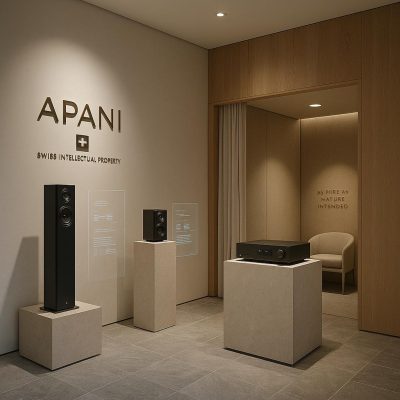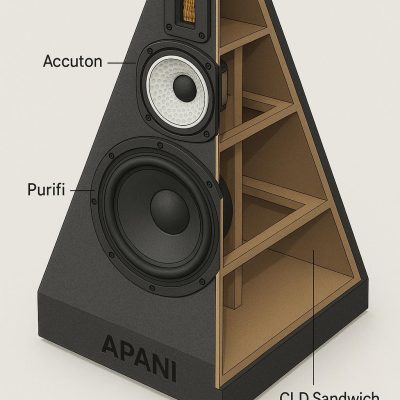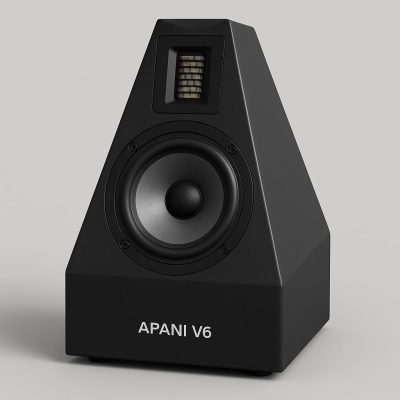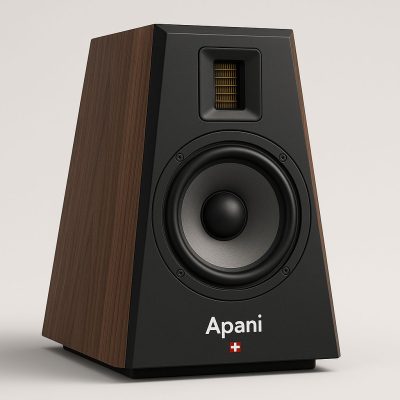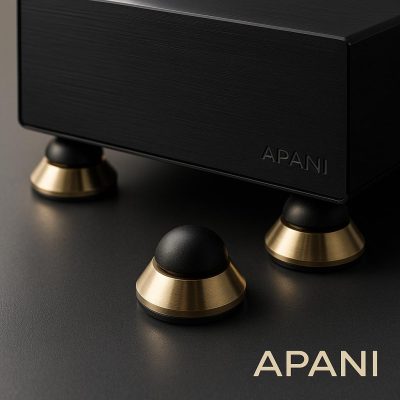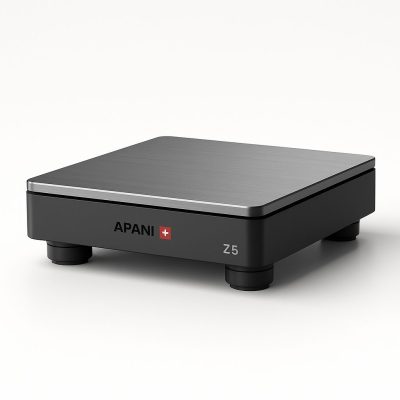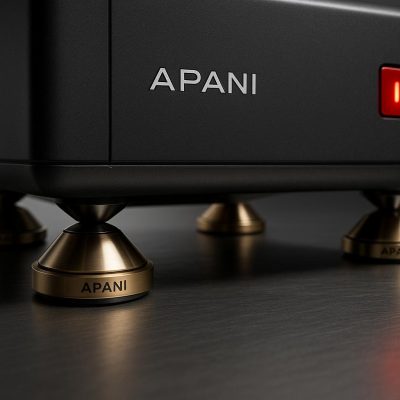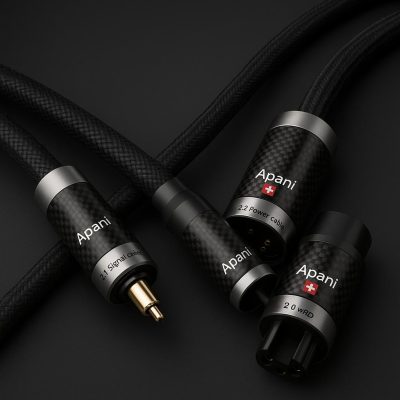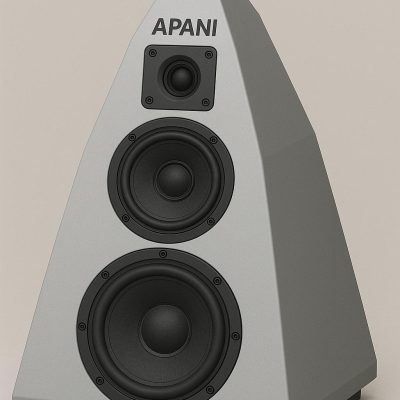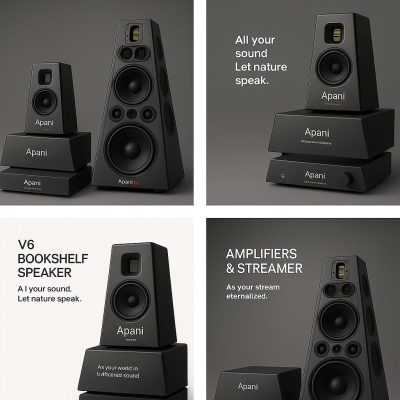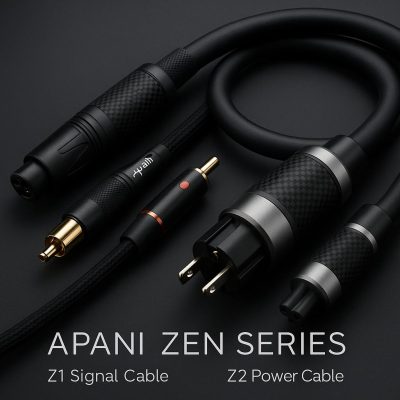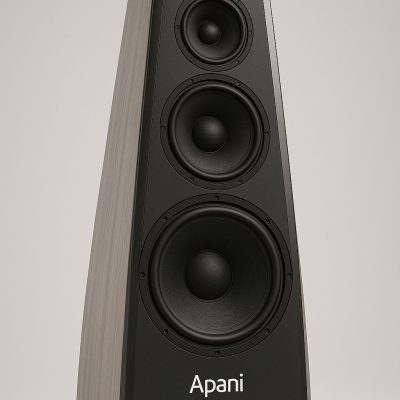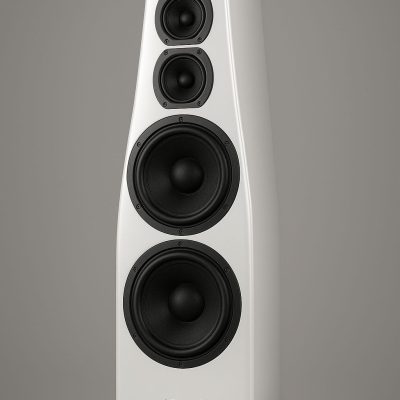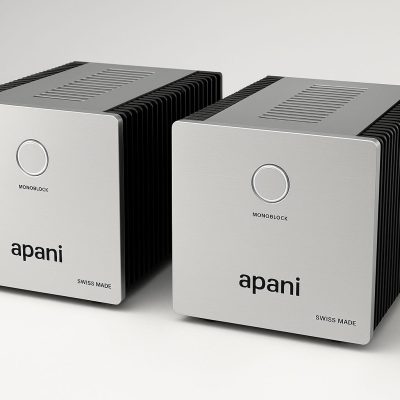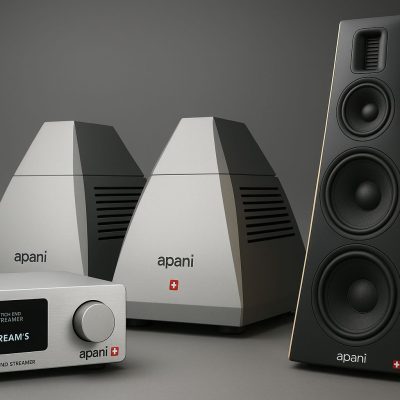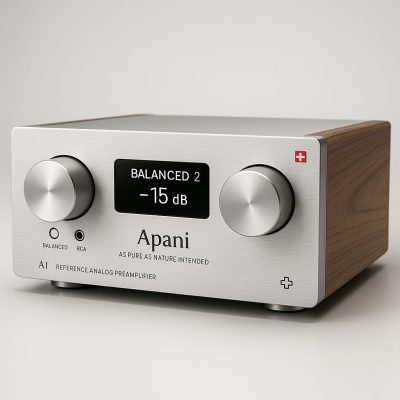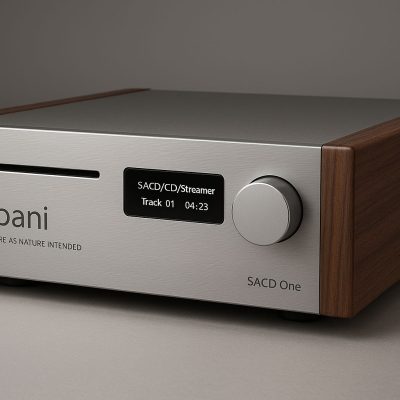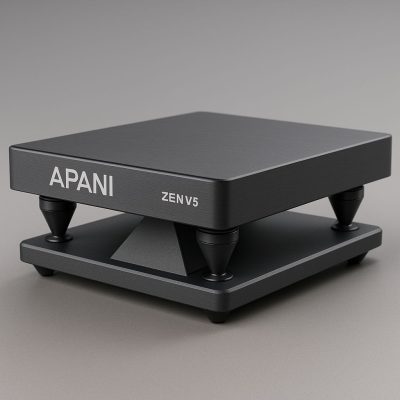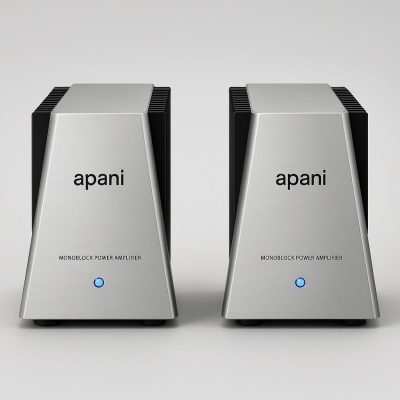Audio Innovation and Human Listening Laboratory
Research, development, design and technology
of state of the art studio
There comes a moment — rare, unprovable, but undeniable — when you close your eyes and the music opens something in you. Not a theory. Not a frequency response. But a feeling.
It is in that moment that Apani begins.
In a world drowning in technical claims, decibels, and distortions, we return to the original instrument: the human ear, and beyond it, the quiet intuition of the soul.
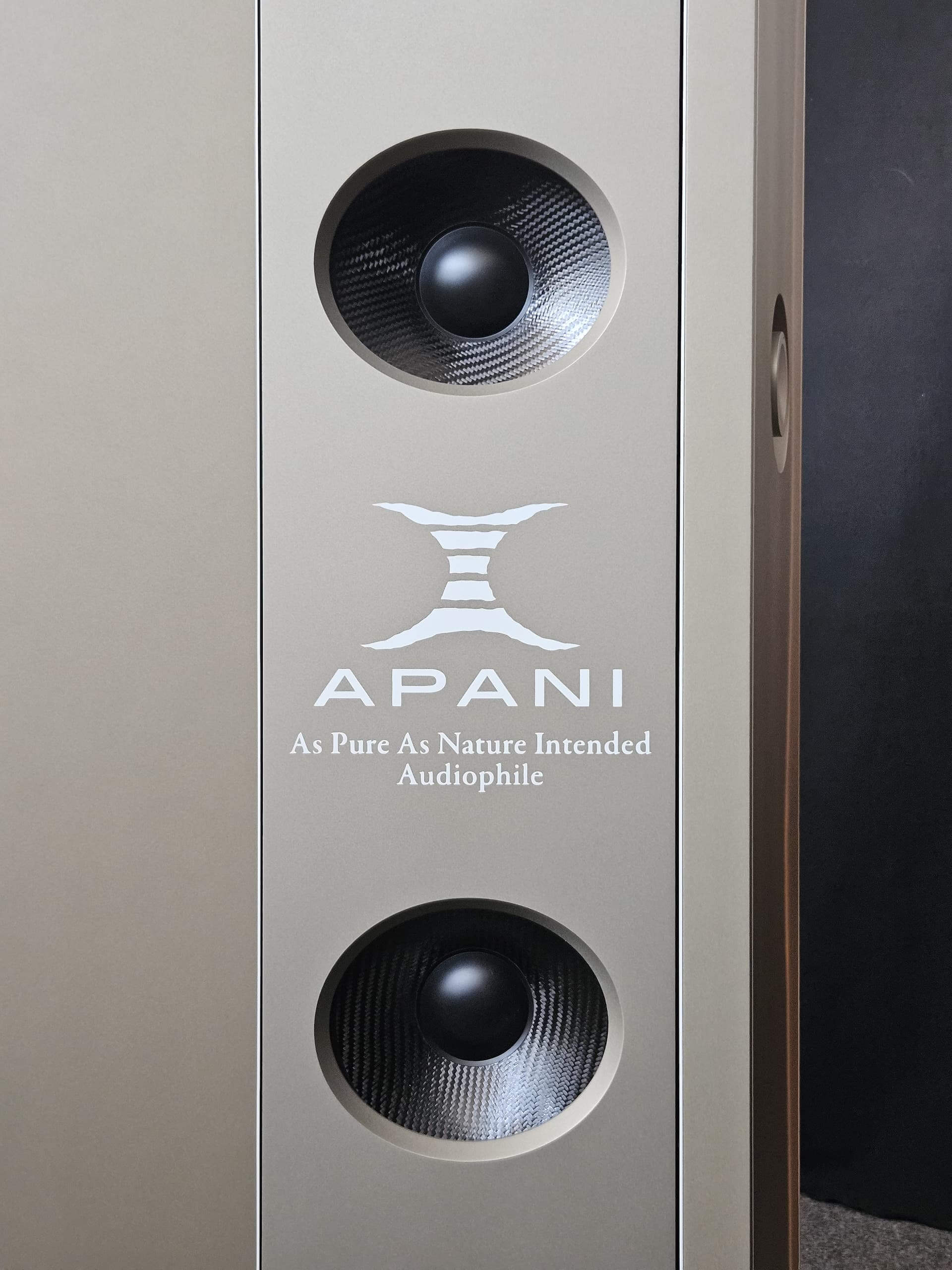
Apani believes that a loudspeaker is not made to be explained — but to be felt.
It is not designed to conquer nature, but to harmonize with it. Not to dominate your room — but to dissolve into it, and leave only the music behind.
Because the ear does not analyze — it remembers. It does not calculate distortion — it senses truth. It does not seek perfection — it longs for recognition, for that subtle clarity by which it knows a loved one’s voice, a whisper in the dark, a violin’s tremble across time.
We believe that to truly listen is to trust your senses — and to trust your senses is to trust nature.
This is the paradox and the poetry of Apani: To build with physics, so that your body may forget physics. To engineer with logic, so that your heart may leave logic behind.
Only when a loudspeaker is free from its own presence, does it let the music come forward.
And so, at Apani, we do not ask the ear to obey the speaker. We ask the speaker to serve the ear — as pure as nature intended.
In the world of high-fidelity, where numbers speak louder than notes, the problem a manufacturer faces in marketing a loudspeaker is as much a problem of persuasion as it is of design.
How does one persuade you — the listener, the seeker, the soul bruised by endless waves of specs and signal-to-noise ratios — that a loudspeaker is not an argument to be won, but a moment to be felt? That the critical factor in evaluating a loudspeaker is not human reason but the human ear? That the ear, in partnership with the vast memory and emotional vault of the brain, is concerned not with measured perfection, but with fidelity to nature?
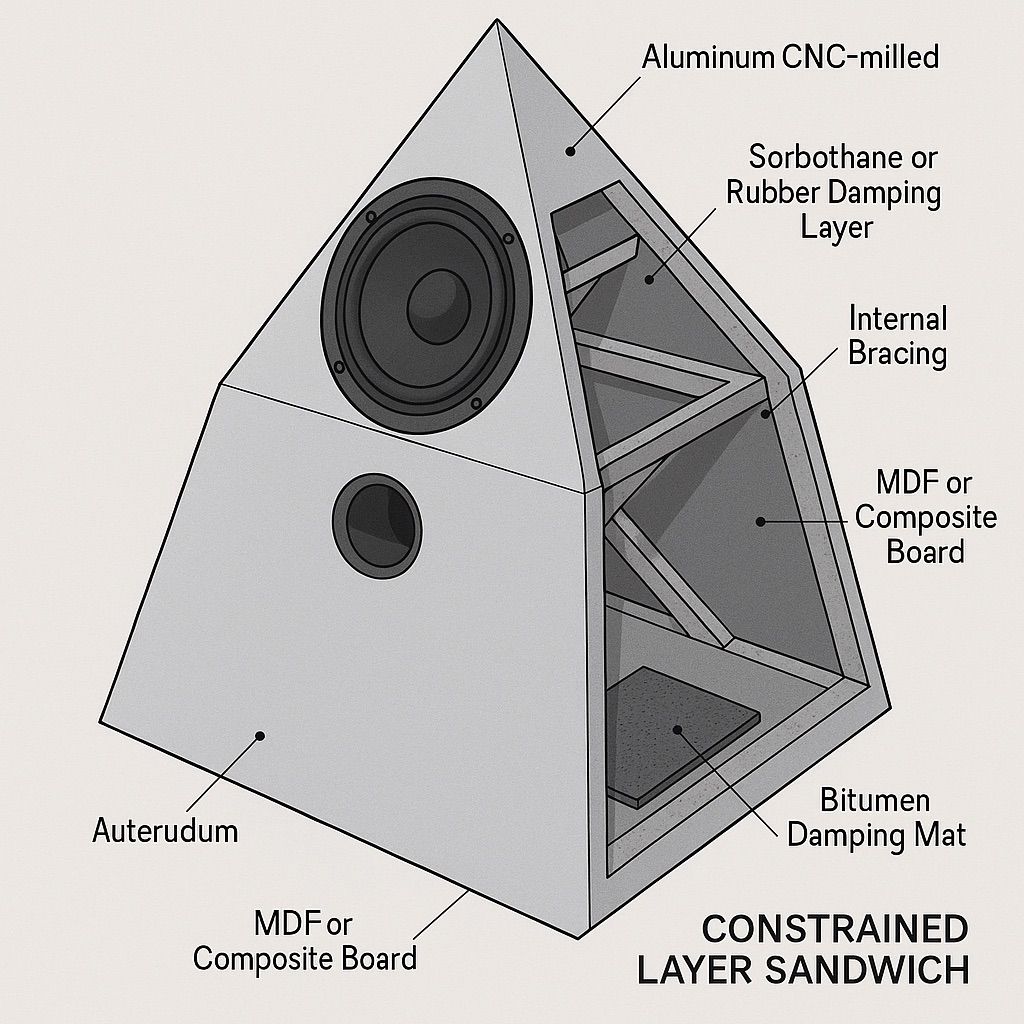
Apani believes the most advanced technology ever designed to evaluate sound is not digital. It’s biological. It is your ear — evolved not for graphs, but for survival. For memory. For emotion. For the shimmering tremble of a voice across a room. For the rustle of danger or the rustle of love.
That’s why at Apani we don’t begin with abstract theories of sound production. We begin earlier — with the human organ destined to receive sound. We ask questions not only about acoustics, but about perception: “How does the ear work? Why did nature design it this way? What does it remember, and what does it forget?”
Because only when you begin with human nature can you use the laws of physics to serve nature — not to abstract it.
And if we proceed with reverence and attention, our loudspeaker will not exist in opposition to the natural world. It will exist in harmony with it.
As Pure As Nature Intended.
If a manufacturer’s motto ought to be “Trust yourself”, then fidelity to the ear must become the ultimate standard of excellence. And yet, you ask, why isn’t there universal agreement about which speaker is best? Because the ear was not designed to rank loudspeakers. It was designed to keep us alive — and it cares about distortion only when it threatens clarity.
Distortion is not the absence of numbers. It is the absence of meaning. It is the obscuring of intelligibility. The masking of the sonic fingerprints that allow us to recognize and remember.
The ear does not waste time. It does not store what it does not need. It forgets what doesn’t matter.
You remember the voice of someone you love. But not the voice of a stranger. You know the difference between a violin and a cello, but not between two airplanes — unless you’re a spotter in war, and the difference means life or death.
Need plus desire — this is what awakens the ear.
So the sports car enthusiast hears the difference between a Jaguar and a Porsche. The opera lover between Corelli and Bergonzi. The symphony-goer between Philadelphia and Cleveland.
The ear is educable. And what it learns, it remembers.
And so, we say this: if you trust yourself, trust your ear. Not because it’s perfect — but because it’s yours. Because it’s human. Because it’s the reason music matters.
At Apani, we create speakers that do not seek to impress the intellect, but to invite the senses. We do not build monuments of measurement. We build moments of recognition. The kind where you don’t say, “This sounds accurate”, but “This sounds like home”.
Why has this so evident fact been obscured by the high-fidelity industry? Greed? Malice? Indifference? Perhaps. But we believe the answer lies deeper — and far more innocent. The same ear that can be educated to make the finest distinctions, can also be conditioned to ignore them. It’s a survival tool — this gift of tuning out the irrelevant. The air conditioner hum, the distant traffic, the buzzing fluorescent light — all quietly disappear. The ear creates quiet where there is none.
But what the ear has learned to forget, the microphone remembers. And that is why, when listening back to a home recording, we are shocked by the clutter of unwanted echoes and mechanical ghosts our ears once filtered out.
And so we ask: how many listeners cling to the familiar, even when it obscures the beautiful? How many choose comfort over clarity? Habit over harmony? How many audiophiles are moved by the truth of the Heil Air Motion Transformer, yet return home to the warm haze of old preferences? Not because it is better — but because it is theirs.
But comfort is not truth. Preference is not fidelity.
True progress in listening demands a shift — from preference as standard, to nature as standard.
And this is where Apani lives. Not in the numbers. Not in the nostalgia. But in the resonance between what is real and what feels true.
It is ironic, is it not, that the ear — so attuned to life — is nearly deaf to loudness changes? That while engineers debate a 3 dB slope, the human ear hardly notices it? That the ear, so insensitive to volume, is exquisitely sensitive to masking distortion — that enemy of intelligibility and nuance?
Consider this: the sound of a rock concert is not 10 or 100 times louder than silence. It is one thousand million times more powerful than a quiet auditorium. Yet our ears endure it. Why? Because evolution protected them — not for measurement, but for survival.
And so the real question is: what is the ear sensitive to?
It is sensitive to the subtle, shimmering resonances of nature. To the crackle of a twig. To the laughter of a loved one. To the ring of porcelain versus the clang of steel. To the fluttering harmonics that distinguish a flute from a saxophone.
Not just what is said — but who says it. And how.
That is what matters. That is what must be honored.
At Apani, we craft loudspeakers that speak to this primal faculty — not to the eye, not to the meter, but to the listening soul. We do not merely reproduce sound. We restore its intelligibility, its intimacy, its identity.
Because nature designed the ear to answer not: How loud? But: What is it? Who is it? How do I feel?
And in that moment — when you hear a friend’s voice on the phone and know their mood from a single breath — that is the moment Apani serves.
Apani – As Pure As Nature Intended.
Listen not with fear. Not with skepticism. But with recognition.
Applications
- Automotive & Aerospace – Removes rust and coatings while preserving structural integrity.
- Industrial & Manufacturing – Ideal for machinery maintenance and metal surface restoration.
- Heritage & Art Conservation – Safely cleans delicate historical artifacts without abrasives.
APANI Training Center
The Apani Training Center provides practical knowledge about the optimal use of Apani laser technology.
Discover the power of laser precision today!
